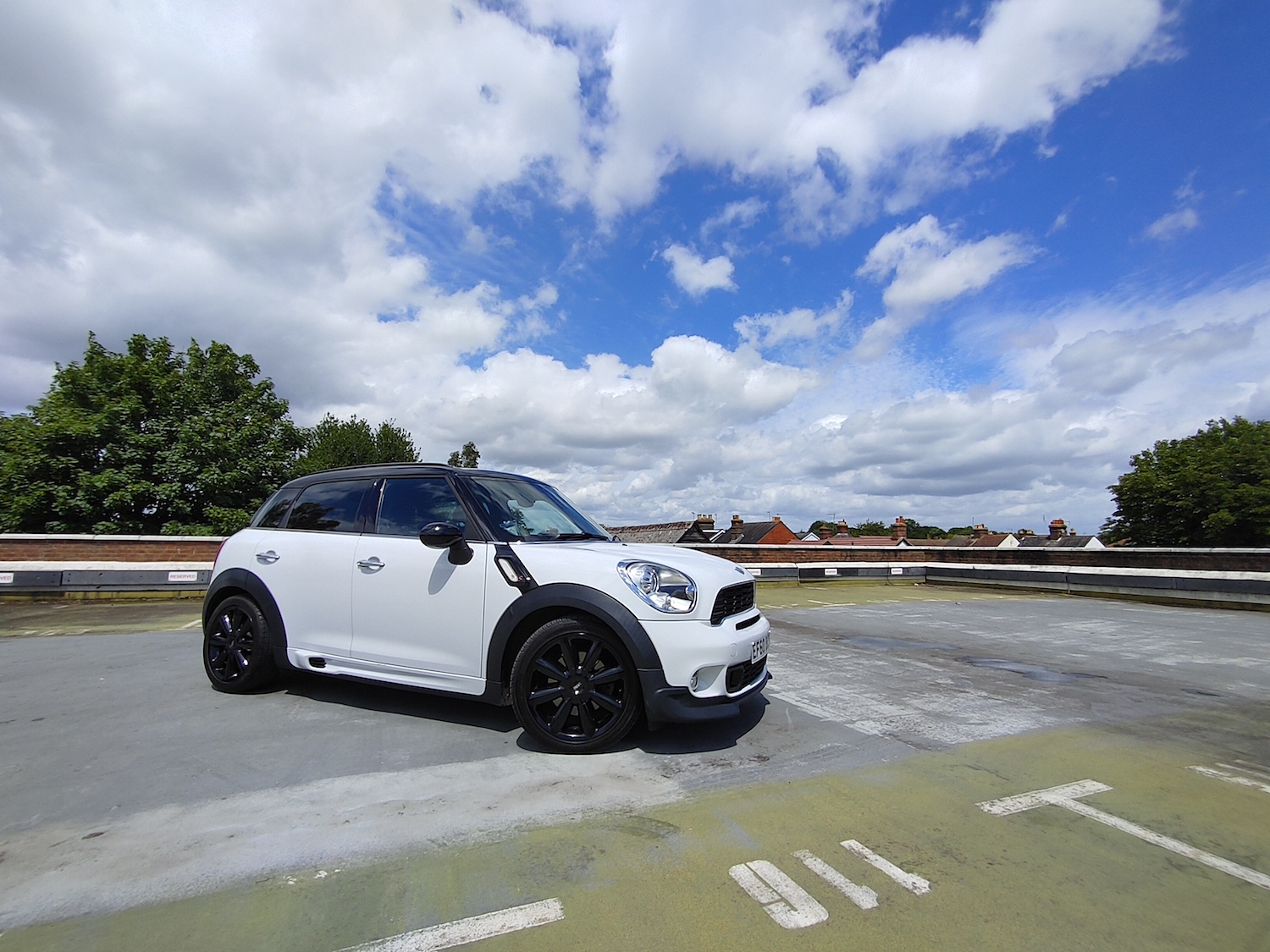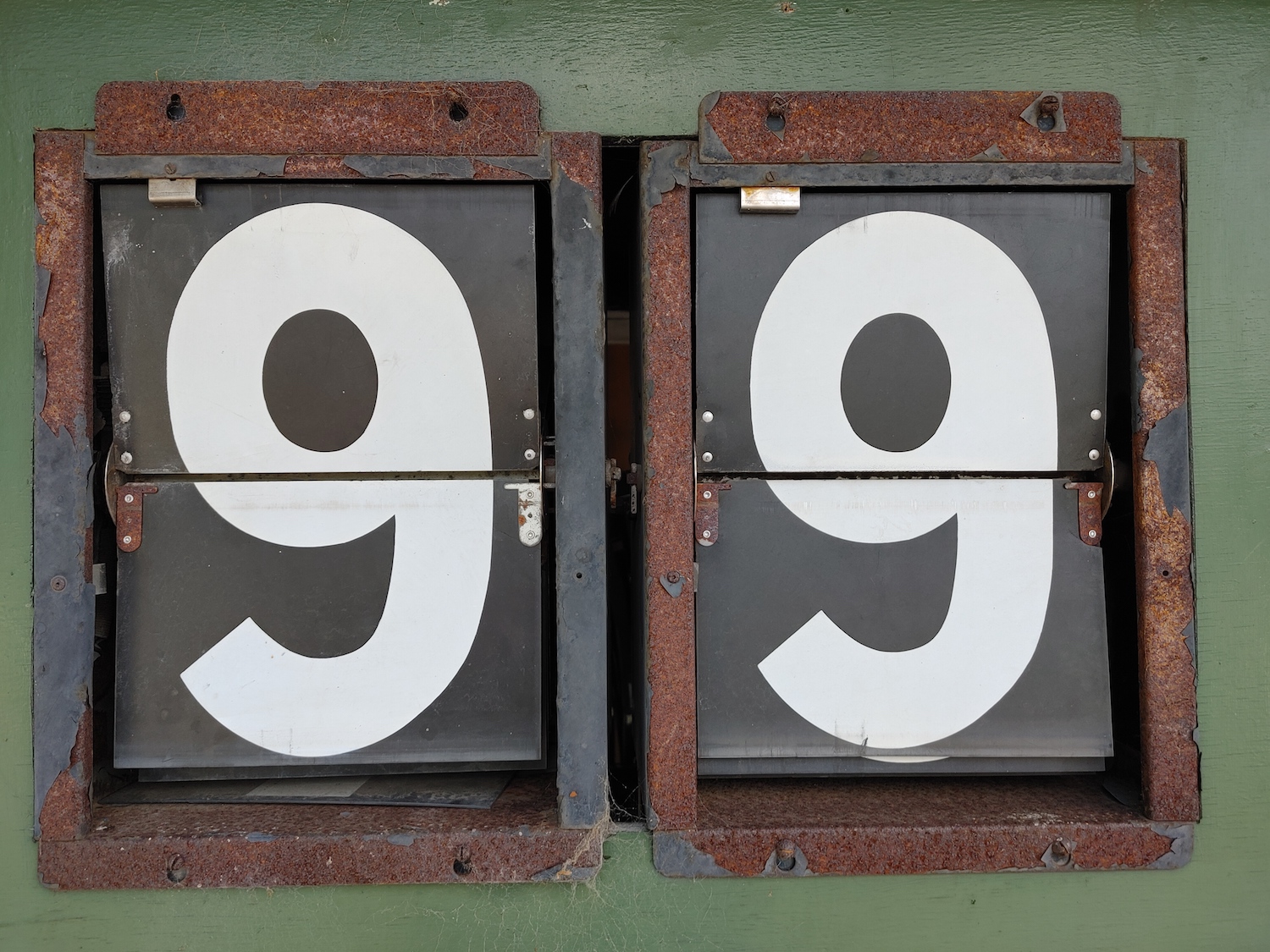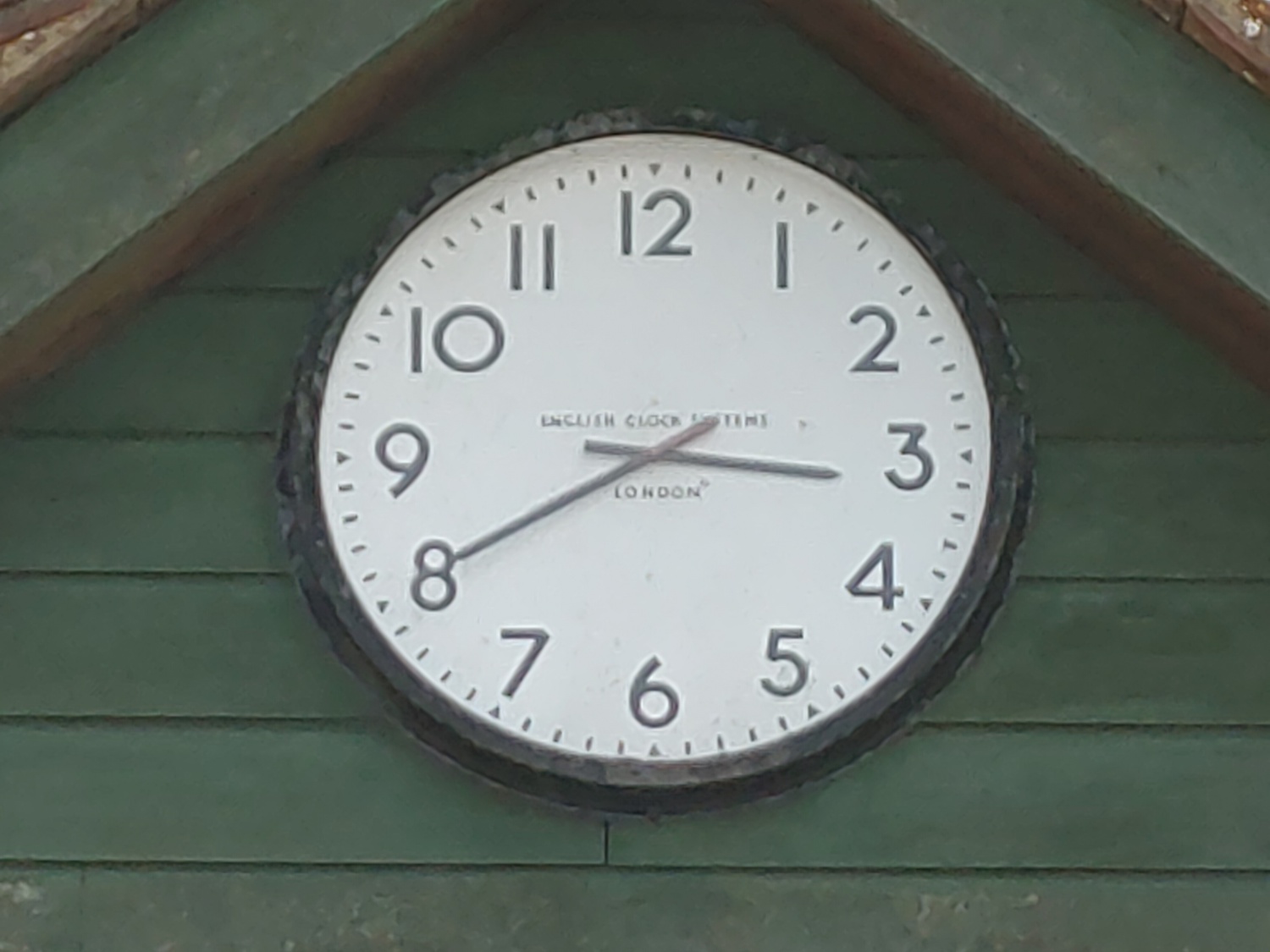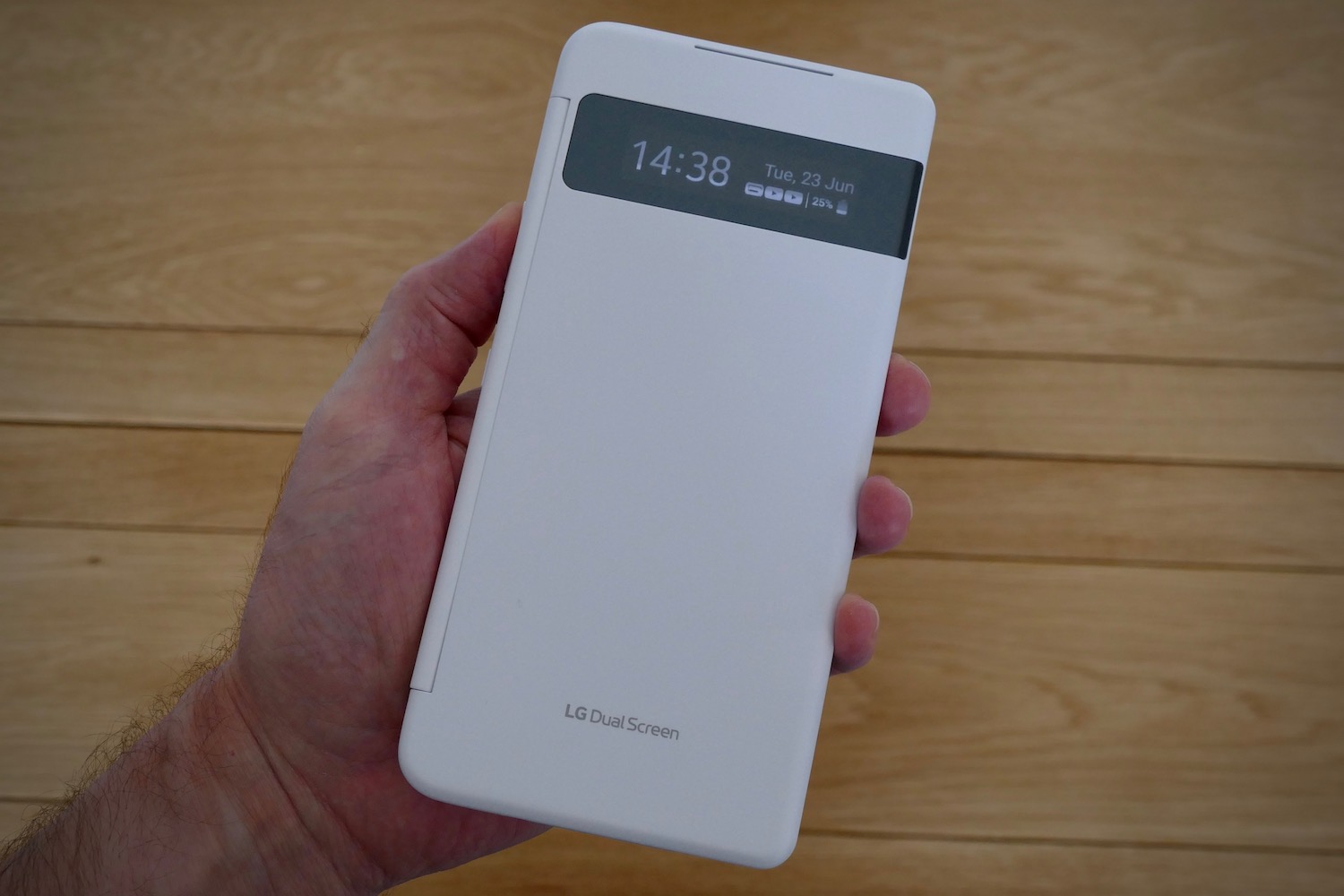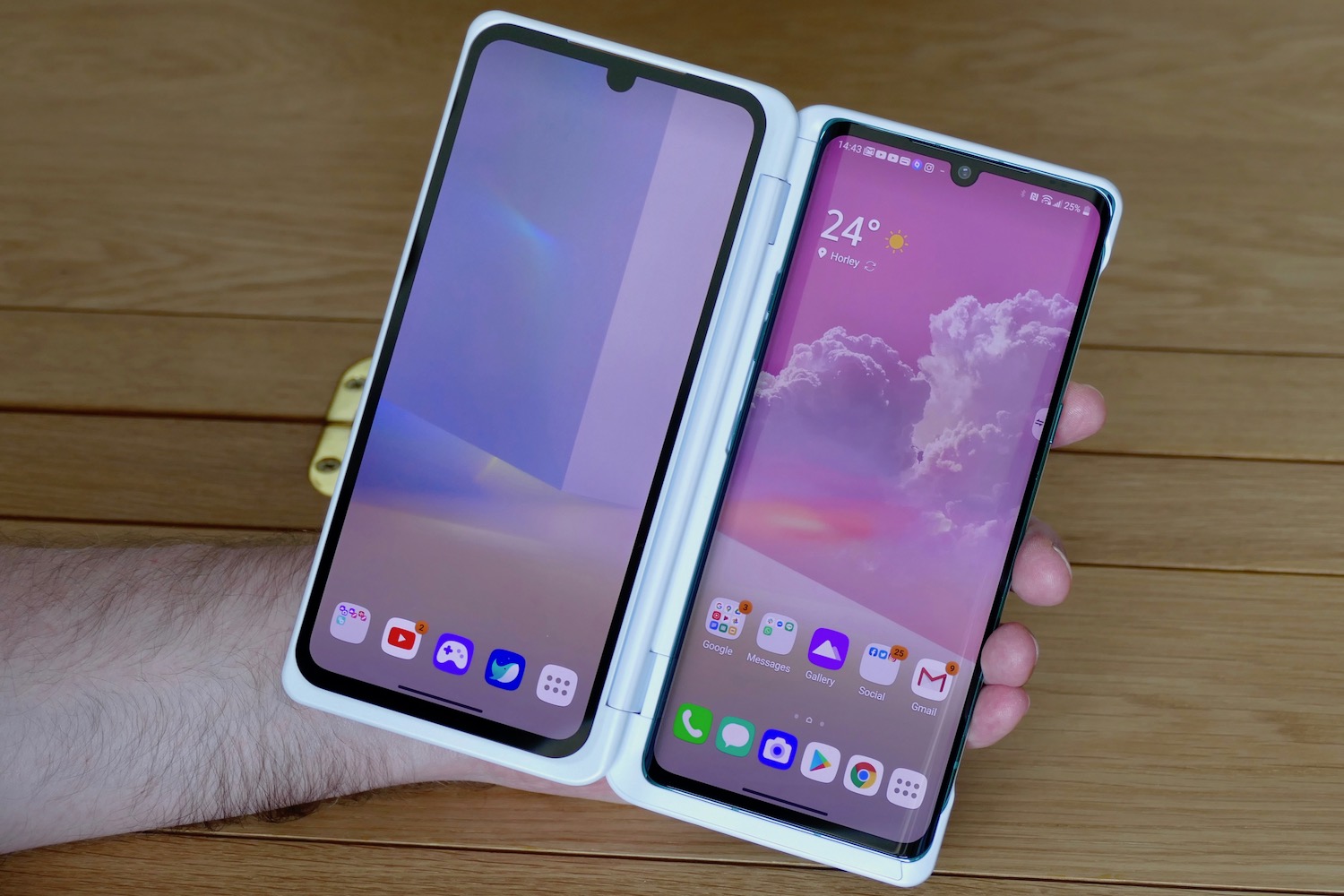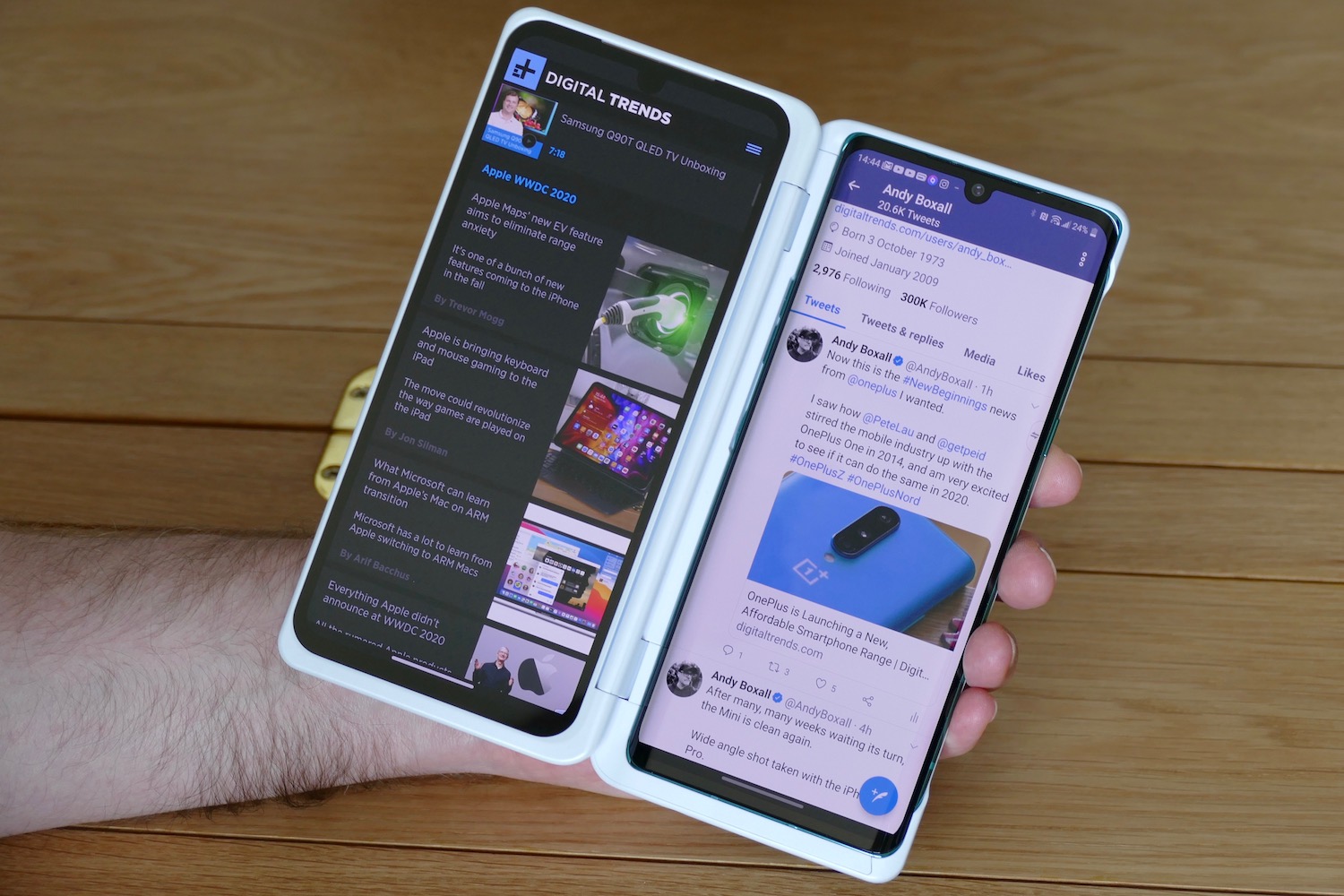- Great design
- Beautiful screen
- Water-resistant and durable
- Decent battery life
- Camera needs improvement
- No 90Hz/120Hz screen refresh rate
Someone has woken up at LG, looked at its smartphone output over the past couple of years, and said, “No, that’s all wrong. Let’s start again.”
The result is the LG Velvet, the most interesting smartphone to come from LG in ages. Gone is the baffling ThinQ branding. The legacy of the G-and-the-V-series has been consigned to the history books. Finally, LG’s designers haven’t simply looked at the last phone they penned and thought, “Whatever. We’ll just do the same again.”
Instead, the Velvet has an intriguing new design to go with its new, memorable name. But even if you remember the name, will you want to buy one?
Design
Compared to recent LG phones, the LG Velvet is wonderfully thin. But how does it stack up next to other phones vying for your attention? It still holds its own. It’s sleek, light, stylish, colorful, and packed with interesting flourishes that make it unique.

Hyperbole? No. The LG Velvet is 7.9mm thick, but due to LG’s curved “3D Arc Design” concept, it feels even slimmer than that in your hand. The edges taper down sharply, and the overall shape of the body is reminiscent of the OnePlus 8 Pro. It weighs only 180 grams. In these days of phones tipping the scales regularly at over 200 and even 220 grams, the Velvet is positively feather-like.
My review model came in Aurora Green, which looks excellent. It reminds me of Bentley’s Verdant Green, and when you get it in the sun, it shimmers and shines. There are several other equally pretty colors, including Illusion Sunset, which looks a little like Samsung’s Aura Glow.
Yes, we’ve been seeing great colors on phones for several years, but not on an LG phone. Welcome to 2020, LG, it’s lovely to have you.

The camera array is special, too. Arranged in a raindrop formation which gets smaller as the lenses go down, the two lower lenses and the flash are flush with the body. The main top lens does stand slightly proud, but not by much. While it would have been nice if it was also flush, it’s not unattractive. I especially like that the inner lens surround is the same green color as the body.
LG put the volume buttons and dedicated Google Assistant key on the opposite side of the body from the power button. For a right-handed person, it’s not the best, ergonomically. The Google Assistant button is set tightly against the body of the phone, and I’ve never pressed it by accident. I also never pressed it intentionally, making me question why it’s there at all.

The Velvet’s downside is its sharp edges. Sharp-edged phones all have the same issue; they aren’t comfortable to hold. The Velvet is no exception. Gripping it tightly isn’t pleasant. Aside from that, however, the phone’s design is a win. It’s light, stylish, and modern.
Screen and audio
The LG Velvet is tall and slim due to its 20.5:9 aspect ratio, P-OLED screen, which measures 6.8-inches and has 2,460 x 1,080-pixel resolution. This brings it close to the 21:9 aspect ratio Motorola adopted for the Edge Plus. Despite the curved edges, the screen does not cascade over the sides, and there is a substantial bezel above, below, and down either side of the phone.

Although LG doesn’t mention it in the press materials, the Velvet has HDR10 support and happily plays HDR content from YouTube. I like the central teardrop selfie camera cutout. As we see more oversize pill-shaped double selfie cams on high-end phones, this is a neat and inconspicuous alternative.
The audio comes from stereo speakers which sound great. My go-to video test channel is Carfection, and the Dodge Challenger Hellcat Redeye review demonstrates the best of the LG Velvet. The gruff sound of the Hellcat Redeye’s V8 and the wild whine of the supercharger are as important as the colorful visuals, all shot in the burning sunshine. The Velvet handles both sides well, providing a visual and aural treat.
There’s a 3.5mm headphone jack on the bottom, but sadly, the superb Quad DAC seen on many older LG phones has not arrived with it. It’s such a shame, as without it, the Velvet simply sounds ordinary with wired headphones. Connect headphones with Bluetooth, though, and you can get AptX HD, provided they support the higher resolution codec.

Downsides? The screen doesn’t have a high refresh rate, and that will dissuade many potential buyers. A wide range of alternatives, from the OnePlus 8 to the Samsung Galaxy S20, offer a high refresh rate as either a standard feature or an optional mode.
The LG Velvet’s display isn’t the brightest, and I found the brightness needed to be maxed out when in the sunlight or watching video during the day. I also found the palm rejection was a little over-sensitive when gripping the phone’s slightly curved edges. Still, the LG Velvet’s screen is solid overall, and is supported by strong audio.
Camera
The camera lenses on the back of the LG Velvet are arranged in an attractive raindrop formation. You’ll find a 48-megapixel f/1.8 sensor, an 8-megapixel f/2.2 sensor, and a 5-megapixel f/2.4 depth sensor.
On paper, this isn’t great, not when some mid-range phones cost less than the LG Velvet and offer more. Motorola’s Edge Plus, for example, ramps the main sensor up to 108MP, and it’s not alone. Other options, like Samsung and Huawei flagships, double down on zoom.

Does real-world performance overcome these perceived spec limitations? Not really, no.
The LG Velvet’s camera is far from bad, but it is inconsistent, and that can be frustrating. The wide-angle takes very sharp photos with a strong HDR effect with bright blue skies, amped up greens, and strong reds. Use the main lens, however, and the camera forgets all about that, taking photos that are a little washed out. Sometimes, it will over-sharpen shots to the point where they look otherworldly.
The bokeh portrait mode has poor edge detection, the zoom mode (which is not supported by a telephoto lens) stretches to just 2x (and the results aren’t great), and the app frustrates when trying to switch between wide-angle, standard, and 2x modes.
I also lost count of the number of times I activated Google Assistant instead of quickly opening the camera from the lock screen’s swipe-up shortcut.
On the plus side, there are strong levels of detail in many photos, and if you’re OK with the HDR look, some of the wide-angle shots are instantly shareable.
The inconsistencies are something LG could fix, or at least alleviate, through software updates. As tested here, however, it needs improvement to stand out. Flagship phones have good cameras as a rule, and the best are truly exceptional. LG’s Velvet can’t clear that bar.
Performance and software
The LG Velvet has the Qualcomm Snapdragon 765G with 5G connectivity, and either 6GB or 8GB of RAM depending on the model available where you live. My review phone has 6GB of RAM. Here’s some benchmark results:
3DMark Sling Shot Extreme: 2,708 (Vulkan)
Geekbench 5: 1856 Multi Core/580 Single Core
The Motorola Edge is a strong competitor for the LG Velvet, and its results are essentially the same. I also didn’t notice any major differences in general everyday performance or gameplay. Asphalt 9 Legends is great with the standard graphics settings, and 1945 played smoothly. Casual gaming suits the Snapdragon 756G, but it can’t match phones with the Qualcomm Snapdragon 865, like the OnePlus 8, which is a very strong alternative to the LG Velvet.

Like the Motorola Edge, the LG Velvet is fast enough for everyday use. It doesn’t get hot, it plays casual games without a problem, and does everything I wanted without fuss. Hardcore mobile gamers will want the flagship chip, but if you do things like watch videos, use social networking apps, make calls, and take photos, you’ll be happy with the Velvet’s performance. Call quality is also good, but as my local area does not have 5G connectivity, so I could not test this feature out.
The LG Velvet has Android 10 with the June 1, 2020, Android security patch, plus LG’s own user interface over the top. It’s closer to Samsung’s OneUI than it is to Android on a Google Pixel, but is neat, colorful, and consistent in design. An app tray and conventionally laid out notification shade join a great gesture control system, which is fast and fluid. However, I do find some of the app animations slow, such as opening a folder to then open an app. It takes a beat longer than it should, and is especially noticeable coming from a non-LG phone.
Battery and security
A 4,300mAh battery keeps the screen lit on the Velvet, with 25W wired charging and wireless charging to keep it topped up. The screen has a fingerprint sensor set very low on it. Just like the LG G8X ThinQ, face unlock isn’t available. I would like it there for convenience, but the fingerprint sensor is obviously more secure, and is thankfully fast and reliable here.

Lockdown restrictions mean my phone has mostly been connected to Wi-Fi, with my average daily usage hovering around two or three hours, with video calls, voice calls, apps, and the camera at the top of my use list.
The battery has lasted well, but not as well as other phones under the same conditions. It was down to 10% on my hardest use days by the time I was going to bed, which makes me suspect it won’t last longer than a single day when not connected to Wi-Fi.
Dual Screen case
LG offered its own take on dual-screen mobile phones with a case of the LG G8X ThinQ. Instead of going all-in on a folding screen, LG uses a second screen attached to a case. It’s a heavier, less elegant solution than Samsung’s Galaxy Fold, but more affordable and (probably) more durable long-term.
This time, the Dual Screen case is sold separately rather than bundled together, like it was with the LG G8X ThinQ. It adds a second 6.8-inch P-OLED screen to the Velvet, wrapping it all up in a protective white or black plastic case, complete with a small 2.1-inch screen on the front so you can still check the time and see notification alerts.
I didn’t mind covering the LG G8X ThinQ up in the case, as it’s not especially pretty, but the Velvet is different.

I didn’t want to put it in a case, and disliked the bulk it added to the slender Velvet. It adds 129 grams to the 180 gram LG Velvet, a significant increase, and takes the overall depth to 14.4mm, up from 7.9mm without the Dual Screen case fitted. It doesn’t have a battery of its own and takes power from the phone. To recharge the Velvet with the case attached you have to use a small magnetic adapter, which is definitely at risk of being lost.
So it’s a miss, then?
Actually, there is a lot to like with the Dual Screen, if you can overcome the additional size. From having a separate browser window open to using the case’s 360-degree hinge to create a stand to watch video, and using the main screen as a set of controls for selected games, it can be useful. The interface is solid too, and using it is logical and straightforward.
LG told me they expect people to take the case on and off, rather than leave it on all the time. Indeed, though the screen folds around the back of the phone so it doesn’t get in the way, I preferred to take the case off for general use. On the other hand, I rarely found a compelling reason to put it back on again.
Price and availability
The LG Velvet has been priced at 650 euros in Europe, which converts to around $735. LG has not announced the official price in the U.S., and in the past has left price details to local carriers. The launch date in the U.S. is also unknown at the time of writing, but the phone is now available to buy in South Korea and parts of Europe, so expect more news soon.
Our Take
The LG Velvet is a significant step forward for LG in phone design, and the screen is as beautiful as you’ll see on most other phones, but it’s a shame it has not made similar strides forward with the camera. I love the svelte body, the performance is more than adequate for most people, and the battery life is decent.
However, I need a camera that will take great photos all the time, and the Velvet doesn’t quite deliver. This is the phone’s biggest weakness, and will take the Velvet out of contention for frequent smartphone photographers.
Is there a better alternative?
Using the euro price as our basis for comparison, the LG Velvet is positioned to take on the OnePlus 8, which costs 699 euros, and the Motorola Edge, which costs 599 euros. Expect these phones to compete with the LG Velvet when it launches in the U.S. and the U.K.
The OnePlus 8 is the better purchase due to the faster processor, better camera, higher screen refresh rate, and excellent software. However, the LG Velvet is lighter and more attractive, which helps it stand out. The OnePlus 8 and LG Velvet both defeat the Motorola Edge, which also has a mediocre camera and struggles with some software quirks.
How long will it last?
The LG Velvet may be slim and sleek, but it’s also tough. The body has an IP68 water resistance rating, and meets the MIL-STD 810G toughness tests, so it’s going to be durable. The 5G connection makes the Velvet a good buy for the future too, as even if you don’t have a 5G signal in your area now, it may come later, and the phone gives you the option of trying it out without buying a new phone.
Android 10 is installed now, making the software current. The company has been slow to update older phones to Android 10, which means any update to Android 11 later this year may not arrive very quickly.
Should you buy it?
Yes. The LG Velvet is an attractive, lightweight phone that scores well across the board, though it lacks a single standout feature.



